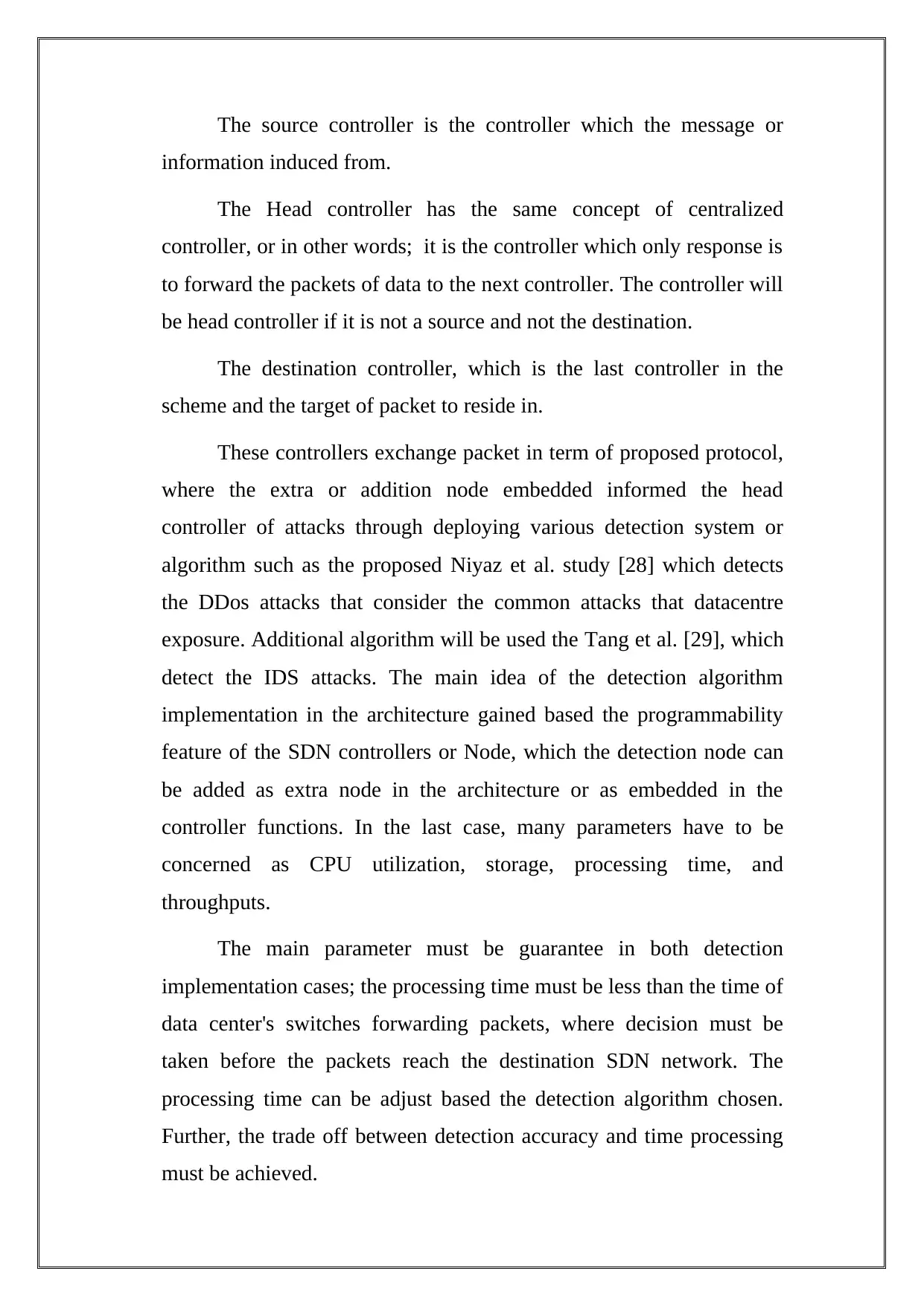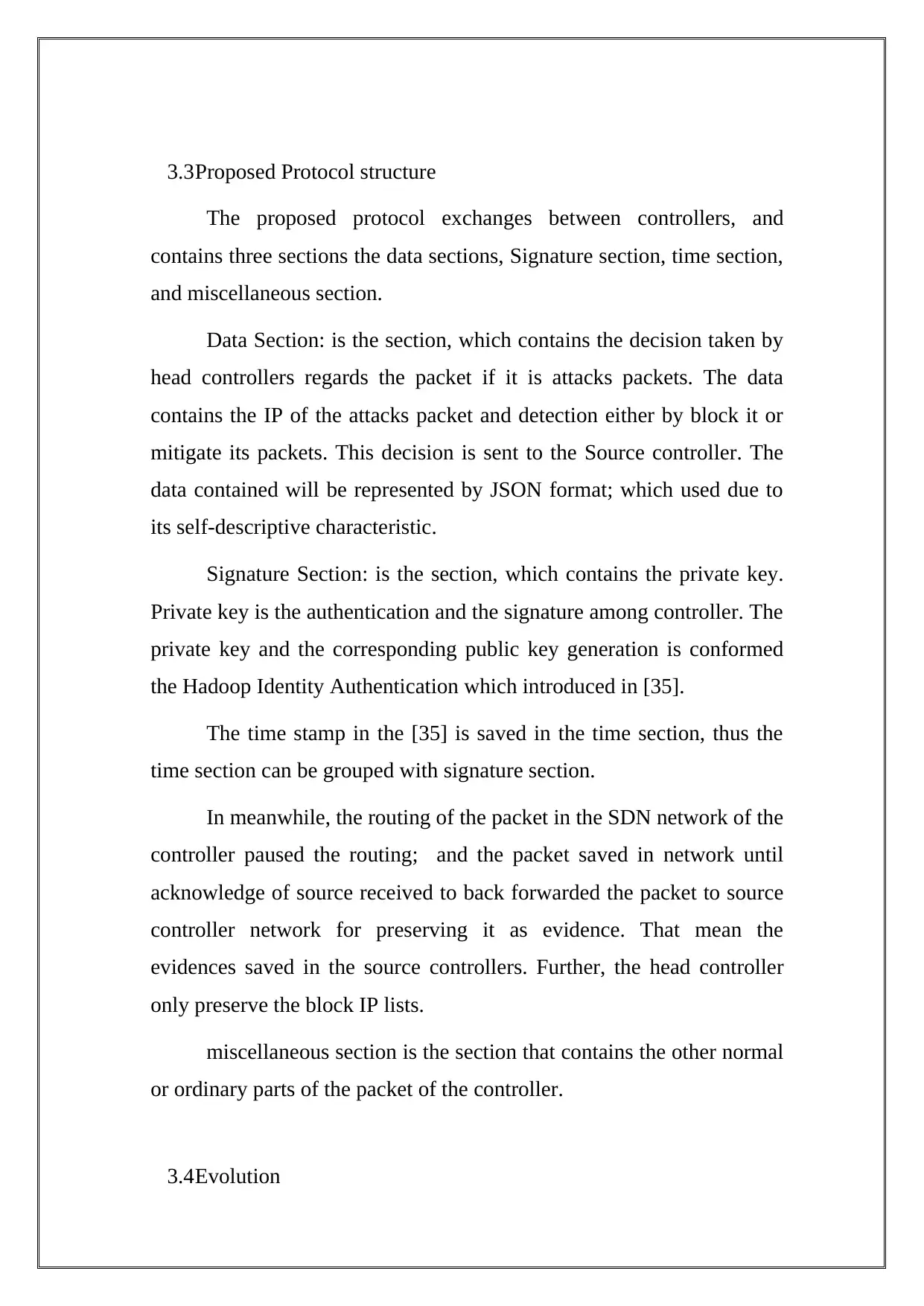Forensic Analysis and Proposed Architecture for SDN Data Centers
VerifiedAdded on 2019/09/27
|6
|1048
|84
Project
AI Summary
This project delves into the methodology and architecture of a Software-Defined Networking (SDN) data center system, focusing on forensic analysis techniques. The proposed architecture employs a three-level controller structure (source, head, and domain controllers) and a novel protocol for packet exchange, incorporating data, signature, time, and miscellaneous sections. The forensic algorithm emphasizes centralized decision-making, preservation of source IP addresses and data, and the integration of detection functions within the head controller, utilizing both embedded algorithms and external detection nodes. The project evaluates the system using the Mininet environment, simulating various attack scenarios (DDoS and IDS) and assessing parameters such as evidence preservation, accuracy, speed, and resource utilization. The protocol structure includes JSON-formatted data sections for attack packets and a signature section for authentication. The study also explores the impact of different detection implementation methods on performance and proposes measures to optimize processing time and accuracy trade-offs. The simulation results provide insights into the system's behavior under different network conditions and attack types.
1 out of 6









![[object Object]](/_next/static/media/star-bottom.7253800d.svg)